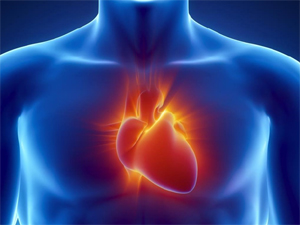



Date:17/03/16
 Scientists at Harvard Medical School have succeeded in growing function heart tissues with the help of donated hearts that were stripped of their cells. According to the scientists, they regenerated the heart muscle in those hearts.
Scientists at Harvard Medical School have succeeded in growing function heart tissues with the help of donated hearts that were stripped of their cells. According to the scientists, they regenerated the heart muscle in those hearts.
The researchers said that although they did not regenerate an entire heart through cells which is still far off, they did succeed in growing tissue from a patient’s own cells. This development could make a huge difference in replacing damaged cardiac tissues after a heart attack.
Commenting on the development of the research, an assistant professor of surgery at Harvard Medical School, Dr. Harold Ott, in a press release, stated, “Generating personalized functional myocardium from patient-derived cells is an important step towards novel device-engineering strategies and will potentially enable patient-specific disease modeling and therapeutic discovery.”
In order to reach the development of the research, the scientists took 73 human hearts that were donated for research purposes as they could not be utilized in a transplant procedure. Those heart were then decellularized by the researchers leaving the vascular and microvascular structures intact. Although, immune and cardiac cells were also removed so that cause any rejection of the new tissue growth.
The researchers then used the reprogrammed skin cells that could be pluripotent and differentiate into cardiac muscle cells. These particular cells were then put in the hearts stripped of the cells for about 120 days. The tissues in the heart were exposed to the conditions similar to that of a living heart. The scientists noted that as there was growth of the tissues, it seemed that they developed force-generating capability that is needed from a healthy cardiac tissue when it is stimulated with electrical currents, UPI reported.
A researcher in the Center for Regenerative Medicine at Massachusetts General Hospital, Dr. Jacques Guyette said, “Regenerating a whole heart is most certainly a long-term goal that is several years away, so we are currently working on engineering a functional myocardial patch that could replace cardiac tissue damaged due a heart attack or heart failure.”
The findings of the study were published in the journal Circulation Research.
Scientists generate human heart muscle in laboratory
 Scientists at Harvard Medical School have succeeded in growing function heart tissues with the help of donated hearts that were stripped of their cells. According to the scientists, they regenerated the heart muscle in those hearts.
Scientists at Harvard Medical School have succeeded in growing function heart tissues with the help of donated hearts that were stripped of their cells. According to the scientists, they regenerated the heart muscle in those hearts.The researchers said that although they did not regenerate an entire heart through cells which is still far off, they did succeed in growing tissue from a patient’s own cells. This development could make a huge difference in replacing damaged cardiac tissues after a heart attack.
Commenting on the development of the research, an assistant professor of surgery at Harvard Medical School, Dr. Harold Ott, in a press release, stated, “Generating personalized functional myocardium from patient-derived cells is an important step towards novel device-engineering strategies and will potentially enable patient-specific disease modeling and therapeutic discovery.”
In order to reach the development of the research, the scientists took 73 human hearts that were donated for research purposes as they could not be utilized in a transplant procedure. Those heart were then decellularized by the researchers leaving the vascular and microvascular structures intact. Although, immune and cardiac cells were also removed so that cause any rejection of the new tissue growth.
The researchers then used the reprogrammed skin cells that could be pluripotent and differentiate into cardiac muscle cells. These particular cells were then put in the hearts stripped of the cells for about 120 days. The tissues in the heart were exposed to the conditions similar to that of a living heart. The scientists noted that as there was growth of the tissues, it seemed that they developed force-generating capability that is needed from a healthy cardiac tissue when it is stimulated with electrical currents, UPI reported.
A researcher in the Center for Regenerative Medicine at Massachusetts General Hospital, Dr. Jacques Guyette said, “Regenerating a whole heart is most certainly a long-term goal that is several years away, so we are currently working on engineering a functional myocardial patch that could replace cardiac tissue damaged due a heart attack or heart failure.”
The findings of the study were published in the journal Circulation Research.
Views: 522
©ictnews.az. All rights reserved.Similar news
- Azerbaijani project to monitor disease via mobile phones
- Innovative educational system to be improved under presidential decree
- NTRC prolongs license of two TV and radio organizations for 6 years
- Azerbaijan establishes e-registry for medicines
- Azerbaijani museum introduces e-guide
- Nar Mobile opens “Nar Dunyasi” sales and service center in Siyazan city
- International conference on custom electronic services held in Baku
- OIC secretary general to attend COMSTECH meeting in Baku
- Azerbaijan develops earthquake warning system
- New law to regulate transition to digital broadcasting in Azerbaijan
- Azerbaijani State Social Protection Fund introduces electronic digital signature
- Intellectual traffic management system in Baku to be commissioned in December
- Tax Ministry of Azerbaijan started receiving video-addresses
- World Bank recommends Azerbaijan to speed up e-service introduction in real estate
- Azerbaijan to shift to electronic registration of real estate





















